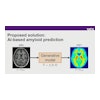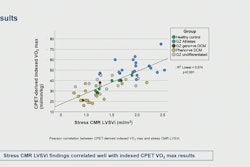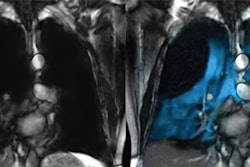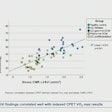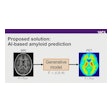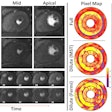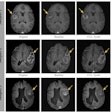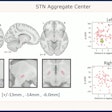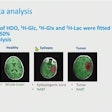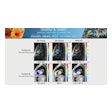HONOLULU -- Superficial white matter (SWM) biomarkers show promise for classifying early Alzheimer's disease, according to research presented May 14 at the ISMRM meeting.
The results could translate to earlier identification of the disease and thus improve patient care, said presenter and doctoral candidate Yuchen Liu of Fudan University in Shanghai, China.
"[Our] study emphasizes the potential of SWM changes as neuroimaging biomarkers for the early stages of [Alzheimer's disease]," she told session attendees. "These findings could contribute to improved early detection and intervention strategies for Alzheimer's disease."
Alzheimer's is a progressive neurodegenerative disorder, and early intervention and diagnosis are key to preserving individuals' quality of life, Liu explained. A condition called subjective cognitive decline is known to increase a person's risk of developing Alzheimer's disease, but it is not clearly characterized. (The condition consists of patients' self-reported experience of worsening memory or confusion, even though objective cognitive tests don't necessarily show impairment; it can be difficult to differentiate between normal aging and "pathological decline" such as mild cognitive impairment and Alzheimer's disease.)
Diffusion tensor imaging (DTI) is effective for assessing white matter, but changes in SWM in subjective cognitive decline haven't been thoroughly evaluated, according to Liu. To this end, her group sought to identify any SWM markers that could help classify the early stages of Alzheimer's. The team compared DTI indices in SWM markers using data from 411 individuals categorized into the following groups.
- 129 healthy volunteers
- 53 people with subjective cognitive decline (SCD)
- 53 with objectively-defined subtle cognitive decline (Obj-SCD)
- 72 with amnestic mild cognitive impairment (aMCI)
- 93 with Alzheimer's disease
All study participants underwent 3-tesla MRI with T1-weighted and diffusion-weighted protocols. The researchers processed the T1-weighted data using FreeSurfer version 6.0 and the diffusion-weighted data with FSL version 6.0.4 and MRtrix 3.0. (The DWI algorithms calculated fractional anisotropy, mean diffusivity, axial diffusivity, and radial diffusivity.) They evaluated the models' results with the area under the receiver operating characteristic curve (AUC).
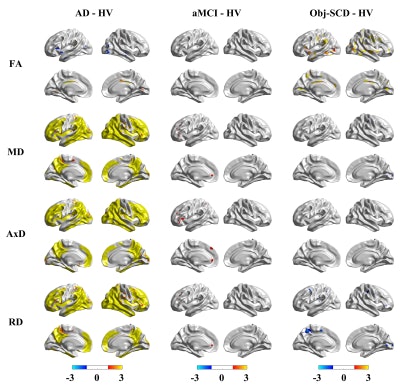 Group differences in the quantitative indices of SWM and GM. Significant group differences were found between AD - HV, aMCI – HV and Obj-SCD - HV (FDR-corrected p < 0.05). The yellow/red regions indicate higher values in patients and the light blue/dark blue regions indicate lower values in patients. The corrected p-value in each vertice was transformed as -log10(P) and the threshold is set by 1.3 - 3, which means that the vertices with FDR corrected p < 0.05 will have color. Graphic and caption courtesy of Yuchen Liu and the ISMRM.
Group differences in the quantitative indices of SWM and GM. Significant group differences were found between AD - HV, aMCI – HV and Obj-SCD - HV (FDR-corrected p < 0.05). The yellow/red regions indicate higher values in patients and the light blue/dark blue regions indicate lower values in patients. The corrected p-value in each vertice was transformed as -log10(P) and the threshold is set by 1.3 - 3, which means that the vertices with FDR corrected p < 0.05 will have color. Graphic and caption courtesy of Yuchen Liu and the ISMRM.
The investigators reported the following regarding the algorithms:
- Superficial white matter indices had the best performance for distinguishing people with Alzheimer's disease from healthy volunteers, with an AUC of 0.81.
- The second highest AUC was for individuals with Obj-SCD versus healthy volunteers (0.76).
- The third highest AUC was for people with SCD compared to healthy volunteers (0.70) and those with aMCI versus healthy controls (0.69).
"These findings support the hypothesis that SWM alterations serve as valuable biomarkers for distinguishing stages of cognitive decline … [and] DTI can provide a more objective approach for early diagnosis compared to cognitive assessments based on self-report," Liu concluded.
Check out AuntMinnie’s full coverage of ISMRM 2025 here.



